
+91 8095511877

+91 8095511877
Deep brain stimulation(DBS) surgery is a surgical treatment to control the symptoms of Parkinson’s disease((PD). If you have Parkinson’s disease and get little relief with medicines, a DBS surgery is for you. It can also help you to get over the side effects of medication for Parkinson’s Disease.
It is important to note that a DBS will not prevent your condition from getting worse. But it helps you improve the quality of your life significantly. Disturbing symptoms like tremors, stiffness, walking problems, etc. that make life difficult for you, respond well to DBS.
During the surgery, your doctor will implant an electrode to the area of your brain responsible for voluntary movements. This area is deep inside your brain and hence the name deep brain stimulation.
The surgeon will place a pulse generator in a skin pocket in the chest. Thin wires connect the electrodes and the generator. The generator then stimulates the area and controls the body movements. It helps to improve the symptoms like tremors, rigidity and gait abnormalities.
The duration of the surgery will be five to six hours. You will be in the hospital for a 15-18 days
Most of those who have a DBS will have relief from symptoms for approximately ten to fifteen years. In a small minority, the effects will be minimal.
As it is a degenerative condition, Parkinson’s disease gets worse as the years pass. Your symptoms like tremors, short stepping gait, hesitancy, stiffness, etc. will also worsen.
Medicines like levodopa will usually help you in the first few years. But after some time, it’s effects start decreasing. Gradually you will get only short-term relief with the medicine. An increase in dosage will also not help you to overcome this.
In such a situation, a DBS can help you to control the symptoms. It thus helps to improve the quality of your life as well.
Long-term use of levodopa can also cause some side effects that affect your movements. Dyskinesia is the most common side effect. In this, there will be sudden and jerky movements of the arms, legs, and the body. Twisting, squirming, etc. of the body and bobbing of your head may also occur. A DBS will help to control these symptoms as well.
You have Parkinson’s disease because of the degeneration of a part of your brain called the basal ganglion. In the basal ganglion, there is a nucleus named substantia nigra, which produces dopamine, a neurotransmitter. It is responsible for the relay of messages around the brain that plans and controls your body movements. The degeneration of the substantia nigra reduces the amount of dopamine. It disrupts the relay of messages for voluntary body movements.
This, in turn, leads to overactivity or under-activity of some parts of the basal ganglia. Overactivity leads to uncontrolled body movements like tremors. Under-activity causes rigidity or stiffness of arms and legs.
The surgery helps to control the overactive areas and to stimulate the underactive areas. It thus helps to make your body movements much more comfortable than before. Symptoms like tremors also tend to be slow down as well.
You may have a DBS for the following reasons:-
An ideal patient for a DBS is one who still gets some relief from levodopa, but the duration of relief is too small.
You may not have a DBS if you have other symptoms like urinary incontinence, dementia, depression or weakness. This is called Parkinsons Plus syndrome.
Before the advent of DBS, the other surgical options were to remove or destroy specific areas of the brain. The removal of brain tissue always has an element of risk with the possibility of adverse events. In comparison with those options, a DBS has many advantages.
Some of the main advantages of DBS are –
Before the surgery, you will have a medical check-up to assess your fitness. Your blood sugar and blood pressure levels should be within normal limits. It will help you to avoid any complications after surgery.
Your neurosurgeon will take MRI scans of your brain. It helps to locate the areas to place the electrodes precisely. You will have to stop any blood thinners for atleast 7 days before the surgery. It prevents the risk of bleeding during the operation.
There are two ways of doing DBS procedure. Either you will be awake during the procedure, or you will be under general anesthesia.
In an awake DBS, you will be able to listen to the doctors and follow their commands. In this surgery, you should not take your PD medicines on the day of the operation. It helps the surgeon to assess the improvement in your symptoms as the surgery progresses.
Before the surgery, you will have mild sedation. You will also have local anesthesia on the scalp.
Next the surgeon will fix a frame on your head. You will have an MRI or CT scan of your brain along with the frame. The surgeon will fix the frame to the operation table during surgery
The surgeon makes an incision in the scalp to expose the skull bone. The surgeon will then drill a small hole in your skull over the area where he or she will place the electrode. The surgeon will then slowly guide the electrode through the opening into the precise area where your symptoms originate.
Then the surgeon will assess your symptoms and give you simple commands like holding an object to assess tremors and then passively move your arm to assess rigidity. The surgeon will also stimulate the electrodes to look for positive or negative responses along with their side effects.Since the brain does not feel any pain by itself, you will not have any discomfort during the procedure.
The next step is to place a pulse generator under a small pocket in your skin on the chest area below the collar bone. You will have general anesthesia for this procedure. The surgeon will then connect both with the help of thin wires that pass under your skin.
The next step is to program the generator as is necessary. The generator will then relay signals to the brain areas through the electrode. The surgeon will look for improvement in your symptoms while programming the generator. It will take a few days of tweaking to reach the ideal levels.
If you are not comfortable with a brain surgery while awake, your surgeon may consider a DBS under anesthesia. With this, you will sleep through throughout the procedure. The surgeon will rely on MRI scans alone to precisely locate the areas and the depth to place the electrodes.
You will be in the hospital for few dats after surgery. Once you come back home, you will have to take a few precautions like taking rest for 2 weeks and not to lift any heavy weight during this time.
You will have a dressing on your head in the area of operation. · Take appropriate care of your surgery wound to prevent any infections. Sutures would be cut after 8 days.
Walking would help in wound healing and faster recovery. You will be able to do light activities after one week. Most people will be able to return to work after two to three weeks.
In the days following the surgery, you will have to visit the hospital a few times. During these visits, your doctor will tweak the settings of your pulse generator to optimal levels. It will depend on how better your symptoms are after surgery.
Most have a significant improvement in their symptoms. You may need to take medicines for PD even after DBS, but the doses will be very less. DBS is a safe surgery with very few risks and complications. But some do have adverse side-effects.
Conclusion
Deep brain stimulation helps to control the symptoms of Parkinson’s disease and thereby to improve your quality of life


This article has been reviewed for medical correctness and relevance by
Dr. Gurneet Singh Sawhney
Dr. Gurneet Singh Sawhney is a Consultant Neuro and Spine Surgeon in Fortis Mulund, Mumbai. He has special interests in Functional Neurosurgery and Epilepsy Surgery. His skills also include Neurooncology including skull base and deep seated tumours, Neuroendoscopy procedures including Endoscopic pituitary surgery, Vascular Neurosurgery and AVM surgeries. He is highly experienced in stereotactic, seizure and functional neurosurgery, managing Neurotrauma, complex spine cases including CVJ and emergency neurosurgeries. He was also awarded as The Most Promising Neurosurgeon in Maharashtra - 2016". """
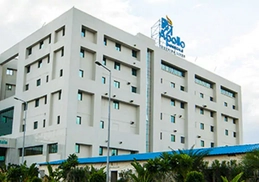
Apollo Chennai
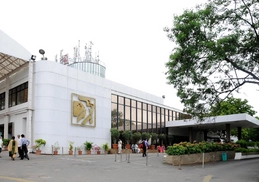
Apollo Health City
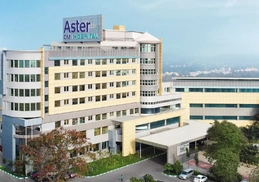
Aster CMI
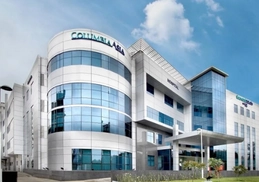
Columbia Asia
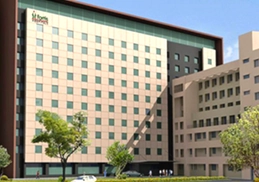
Fortis Mulund
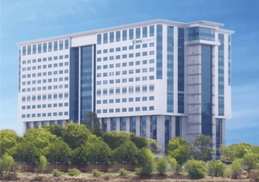
KIMS Hospital Hyderabad
Frequently Asked Questions
How much does DBS surgery cost in India?
How long does DBS surgery take?
Who is a candidate for deep brain stimulation?
Is DBS surgery painful?